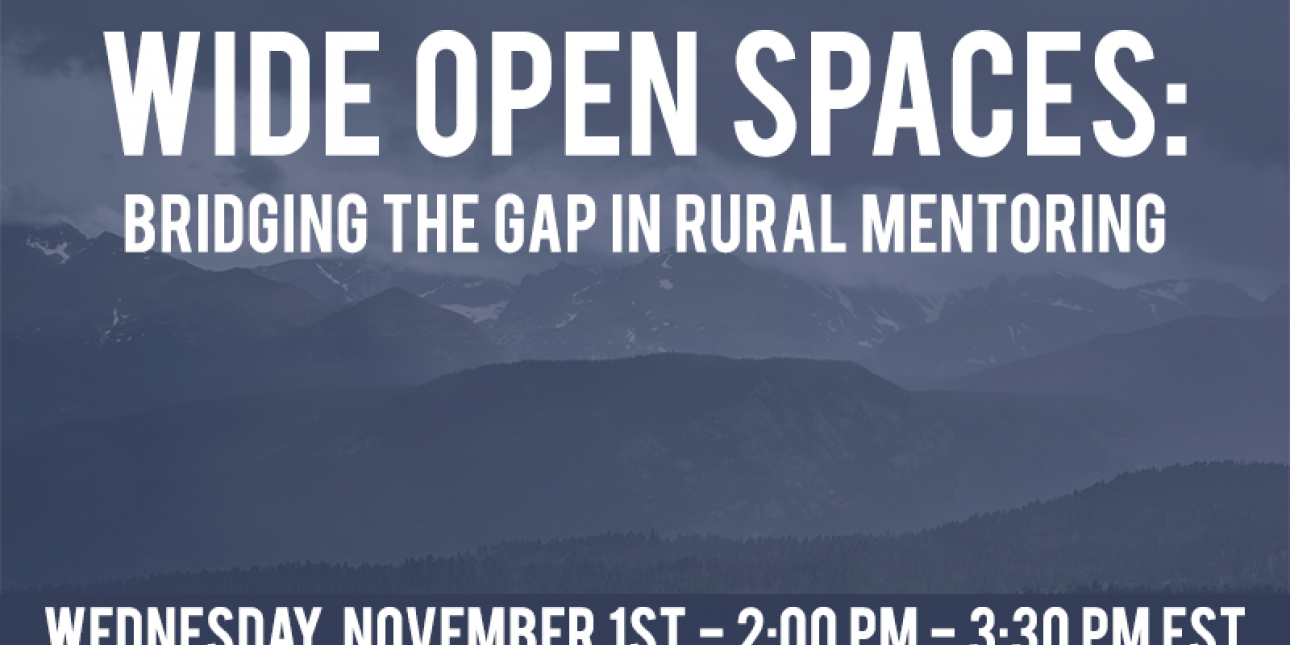Building on the Assets of Rural Communities to Support Your Mentoring Program

Spacious skies, waves of grain, majestic mountains. Much of the narrative that shapes our views of the United States is built on images of rural America. It is where we began, and idyllic notions of small-town life still resonate. As compelling as these images can be, the reality is that rural communities face challenges that may be difficult for those living in urban settings to understand. In spite of these realities, rural communities draw from their many strengths, and benefit from strong community connections and family networks. While only about 20% of the US population lives in rural areas, these places comprise almost 72% of the nation’s land. And rural communities face their fair share of social problems, most recently evidenced by the opioid epidemic, which strikes small towns and rural areas hardest. Yet when we talk about social issues and youth services, these conversations frequently focus mainly on metropolitan areas, which differ greatly from rural areas in many important ways. In cities, for example, public transportation is usually easily accessible, while in small towns it can be non-existent. Likewise, when you live in an area with several large employers, finding volunteers for your agency can be as simple as posting flyers in breakrooms. But what do you do when you only have small mom-and-pop shops from which to recruit? In May 2016, OJJDP’s National Mentoring Resource Center (NMRC), in partnership with MENTOR: The National Mentoring Partnership, held a webinar as part of its Collaborative Mentoring Webinar Series called Mentoring in Rural Communities: Traveling the Distance to Facilitate Your Program. That webinar identified the major challenges faced by rural mentoring programs, and presented insights from the field on how to overcome them. These include:
- Recruiting volunteers (and youth) from a small population;
- Finding resources for match activities;
- Maintaining confidentiality in a place where everyone knows each other;
- Managing vast distances when planning matches or group activities.
While these challenges can feel daunting, the great work that rural mentoring programs do every day proves that they are not insurmountable. For example, Little Dixie in Oklahoma leverages partnerships with agencies that can provide transportation for matches and families, and collaborates on activities and events for mentors and mentees. Children’s Home Society of West Virginia addresses the challenges faced in its communities through resource brokering and advocacy on behalf of families and children. “Keeping the families I serve in touch with other agencies, like local food banks, shelters, employers, rehabilitation centers and social service providers, is vital to coordinating mentoring services in a rural community,” says Jenna Miller, coordinator of the agency’s WE CAN mentoring program. “When a family sees that you’re there to help, and are eager to advocate, the relationship and bond of trust between you, the child and the family improves, which often decreases issues in the future.” MANY is talking to rural agencies throughout the country to find out what works in overcoming the challenges inherent to rural mentoring. These findings will be shared in an upcoming webinar. Wide Open Spaces: Bridging the Resource Gap in Rural Mentoring, will build on the information provided in the 2016 NMRC webinar and present hands-on, concrete tools and techniques based on those insights to capitalize on the strengths and overcome challenges of mentoring in a rural setting. Registration for this webinar is now closed. Contact Mandie at mandie@manynet.org for questions.


